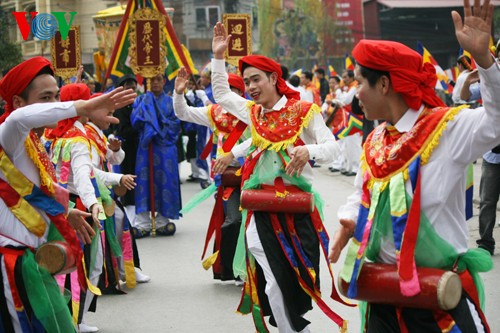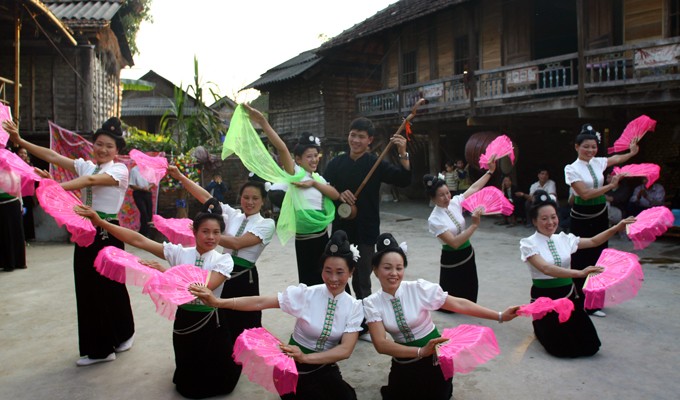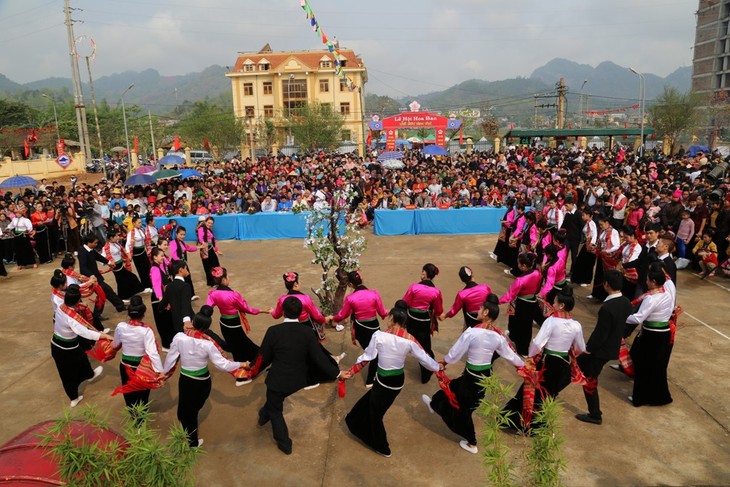(VOVWORLD) - Vietnam has begun 2 days of national mourning for President Tran Dai Quang, who passed away from an illness. Many of our listeners have expressed their condolences.
B: Jayanta Chakrabarty of India said: “It is a sad day for Vietnam and for the world in the sad demise of Vietnam’s dear President Tran Dai Quang. This stalwart not only led his people toward peace and development but was also a humane person full of compassion and love for his Fatherland and its citizens. In his untimely death, the Vietnam Communist Party, the State and the people will feel an irreparable loss. May his soul rest in peace!”
A: José Llamos Camejo of Cuba told us that he was very sorry to receive the news of the sudden death of President Quang, illustrious son of the heroic Vietnamese nation and unconditional friend of Cuba.
B: Upon learning of the sad event, he said: “The image came to my mind of Tran Dai Quang on November 15, 2016, at a meeting with Commander-in-Chief Fidel. He was the last foreign president to visit our historic leader, just 10 days before his death, and that fact has a strong symbolic charge. I think that on that occasion the coincidence was fair and consistent with the beautiful history of solidarity that both nations have cultivated. I wish to reiterate to you, the VOV collective, the journalists and the people of Vietnam, my sincere solidarity in the face of such a sensitive loss. I am sure that, as always, you will overcome this difficult moment and you will move ahead. And in that effort, once again you can count on us, unconditionally. A fraternal embrace from Guantánamo, Cuba.”
A: Richard Nowak of the US wrote: “I wish to send my sympathy and thoughts to the staff of VOV, the family of President Quang, and the Vietnamese people on the passing of President Tran Dai Quang. May he rest in peace. President Quang worked to improve Vietnam’s relations with the US and hosted both President Obama and Trump on their visits to Vietnam.”
B: SB Sharma of India’s SBS World Listeners’ Club told us: “It was Sunday so all members of our Club listened to Voice of Vietnam together. We also organized a condolence meeting for the late President of Vietnam. We observed two minutes of silence for his eternal soul and prayed for peace for the soul of late President of Vietnam. Today’s news was focused on late President Quang. Condolence messages have been coming from around the globe. Our Indian Prime Minister Narendra Modi also sent his condolences.”
A: Thank you all for letting us know your feeling about the demise of President Tran Dai Quang. A state funeral for him is being held on Wednesday and Thursday. The Vietnamese flag will fly at half mast at all government buildings and Vietnamese representative offices abroad. All public entertainment and sporting events will be suspended across the country.
B: Now, here are reception reports from other listeners. We welcome John Comanzo of New York, who tuned in to VOV for the first time on 7315khz on September 13 from the East Coast of the US.
A: John said: “The signal strength was very strong. There was low interference and noise. Propagation was very good. I was very surprised how good the reception was on my portable Tecsun PL-660 receiver with built-in whip antenna. Overall I would rate reception very good to excellent with a SINPO of 54455. I enjoyed the program and I look forward to listening to more VOV broadcasts.”
A: Marty Schuette of Illinois also listened to VOV for the first time on 7315 khz on September 22nd. The program included news on the death of Vietnamese President Tran Dai Quang. Signal was good with some fading in and out at times. B: Thank you, John Comanzo and Marty Schuette, for your feedback. We’re glad to be in correspondence with you. We’ll send you QSL cards to confirm your monitoring.
B: Next up on the Letter Box, we’ll talk about Vietnam’s folkdance to answer a question by Najim Uddin, who loves to learn about Vietnam’s cultural diversity.
 A performance at a Traditional Dance Festival in Hanoi. A performance at a Traditional Dance Festival in Hanoi.
|
A: Traditional Vietnamese dance comprises several different forms, including dance performed in theaters, dance performed at festivals, and royal dances of the imperial court. Dance is an integral part of Vietnamese culture, appearing in pictures engraved on ancient items. Vietnam is a diverse country with 54 ethnic groups. The Kinh group constitutes a large majority of the population. Each of the ethnic minorities has its own rich culture and dance styles but the traditional dances of the Kinh are the most popular.
B: Vietnamese theater and music are intertwined, with each other and with dance. Popular theater forms such as Tuong (classical theater) Cheo (popular theater) and Cai luong (reformed opera) all often feature dance, but these dances are performed in a free manner without set rules, unlike other more formal dance styles.
 Men disguised as young girls dance at Trieu Khuc Festival. Men disguised as young girls dance at Trieu Khuc Festival.
|
A: The allure of the Trieu Khuc Village Festival on the outskirts of Hanoi entertains spectators with men disguised as young girls imitating feminine gestures and movements. The dance dates back to the year 905, when General Phung Hung led a resistance war against northern Tang troops. The General made camp at Trieu Khuc village to allow his soldiers to get some much needed rest. As no women have available, he let some of his soldiers dress up like young girls and perform a dance to boost the soldiers’ morale. The dance quickly gained popularity and over the centuries has become an integral part of lunar New Year celebrations.
B: The Xoe dance of the Thai people in Yen Bai province has been recognized as a national intangible cultural heritage. Yen Bai province has proposed Xoe dance to UNESCO for recognition. Xoe dance is one of the most popular dances of the Thai. It plays an important role in their spiritual life.
 Xoe dance of the Thai Xoe dance of the Thai
|
A: In the past, Xoe dance was performed when a hamlet or village was established and during Thai festivals. Now it has developed into 36 dances and has become a symbol of ethnic solidarity in Vietnam’s northwest. During festivals, Thai boys and girls gather near a river to make new friends, perform Xoe dances and drink corn wine. In the flickering firelight, their melodious singing and the sound of gourd lutes creates a fascinating atmosphere.
 Xoe dance is a symbol of ethnic unity in the northwestern region. Xoe dance is a symbol of ethnic unity in the northwestern region.
|
B: The Khmer of southern Vietnam have developed many dances for different occasions which reflect their creativity, aesthetic sense, and cultural and social values. The Khmer have preserved three main forms of dance: folk dance, religious dance, and theatrical dance.
A: At festivals and new year celebrations, men and women of all ages dance to the music of a 5-instrument ensemble. The most popular folk dance is the Ram Vong. Couples move in rhythm to form a circle. The women wave their arms in front of them while the men stretch out their arms as if protecting their partners. The Khmer also have folk dances that imitate their work – scooping shrimp, gathering coconuts, harvesting rice, or beating a drump called Sadam.
B: There are more than 100 traditional dances being preserved in the villages and suburbs of Hanoi. A Dance Festival was recently held in Hanoi to introduce traditional dances which are still being performed at traditional festivals in Hanoi – Dragon Dance, Flag Dance, Candle Dance, Snake Dance, and Rod Dance...
A: That wraps up our Letter Box for today. Thank you for listening to VOV. Please join us again next Wednesday for another edition of the Letter Box. Goodbye till then.